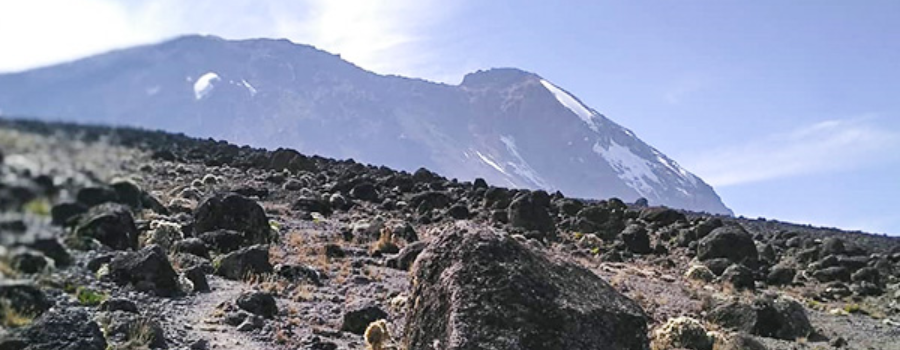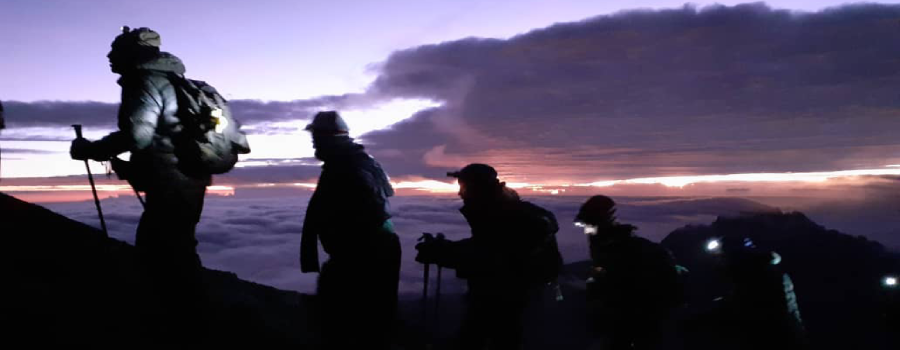Trekking Mount Kilimanjaro is an expedition across multiple climate zones, extreme altitudes, and rugged terrain. That’s why packing smart is half the summit battle. Below, we go beyond the basics and share high-altitude packing wisdom shaped by our Kilimanjaro Climbing experience.
Many climbers underestimate the challenge of Kilimanjaro not just the altitude, but how weather, gear, and energy management can work for or against you. Packing isn’t just about being prepared. It’s about boosting your odds of a successful, safe, and enjoyable climb.
For example, we have witnessed a very common mistake by clients who bring brand-new boots. We’ve seen trekkers pull out new shoes at the trailhead and end up limping by Day 2.
That’s why this guide isn’t your average checklist. It’s a practical, experience-backed resource to help you avoid the common pitfalls and pack with purpose.
Principle #1: Layer Like a Pro: Dress for Every Zone
The key to comfort is mastering the layering system. You’ll want:
Pro Tip: On summit night, you’ll need all your layers. Temperatures can drop to -10°C or lower with strong winds. Having the right gear could be the reason you make it to Uhuru Peak.
Principle #2: Pack Light, Pack Right: Respect Porter Weight Limits
Porters carry your main duffel bag, but it must not exceed 15–20kg (35–44 lbs). Overpacking can lead to repacking at the trailhead or worse, leaving essentials behind.
You’ll carry your own daypack, which should hold only what you need during the day:
Pro Insight: Many trekkers regret overpacking bulky extras like books or multiple pairs of shoes. Stick to essentials. You’ll thank yourself as you approach the base camp.
Principle #3: Waterproof Everything
Rain is especially common on Days 1 and 2 through the rainforest. Even if your duffel is waterproof, double up with:
On-the-ground experience: We’ve seen trekkers with wet clothes by Day 2 because they skipped this step. At Lora Adventures Africa, we help clients line their gear bags before the climb begins.
Principle #4: Invest in Quality Over Quantity
Every item in your bag should serve a clear purpose. Cheap gear can fail in extreme conditions. Trusted brands like Arc’teryx, The North Face, Mountain Hardwear, Marmot, and Patagonia make gear built for this kind of trek.
Field-tested lesson: Don’t gamble with gloves, boots, or outerwear. We’ve seen summit attempts ruined by frozen fingers or soaked shoes. Quality saves the day.

Here’s what experienced climbers always keep in their daypack:
Daily Tip: Your head guide will advise what to carry based on weather, terrain, and elevation. Don’t guess, please ask.
These aren’t essential, but they make a tough climb more enjoyable:
Our experience: Climbers often say these “extras” become the highlights of their off-hours, especially on acclimatization days.
If you don’t want to invest in everything, here are items commonly rented:
At Lora Adventures Africa, we offer vetted rental gear and help you decide what’s worth renting vs. buying. Renting can reduce your luggage burden, especially if you’re traveling through Africa afterward. We will provide you with a comprehensive packing list and prices upon request.
Kilimanjaro’s weather changes dramatically from the rainforest to the Arctic-like summit. A flexible layering system is critical. Go with this 4-part structure:
Real Tip: On summit night, wear all your layers at once. That’s when the -10°C chill can hit like a wall. Your layering game should be dialed in before you arrive.

A good pair of comfortable, high-ankle hiking boots is non-negotiable. Kilimanjaro terrain includes slick mud, scree, loose rock, and even snow. You need support, grip, and durability.
Expert Insight: Train in your boots weeks before the trek, especially on stairs or hills. If they pinch even slightly now, they’ll torture you by Day 3.
You’ll need to drink 3 to 4 liters of water daily, more than you think. Altitude sickness is often made worse by dehydration.
Trail Wisdom: Refill your bladder in the evening and tuck it into your sleeping bag overnight to keep it from freezing.
Real Application: Windburn and sunburn are real even when it’s freezing. A gaiter helps you breathe warmer air on summit night and shields you from dry mountain air.

No showers. Basic long-drop toilets. Welcome to real adventure. But with the right essentials, you’ll stay fresh and confident.
Insider Tip: Pack a small ziplock with these essentials and keep it in your daypack for easy access.
Sleeping at altitude can be difficult, but good gear helps.
Pro Experience: Cold ground takes away your body heat. Use your day clothes as a pillow and sleep in clean, dry base layers.
Packing for Kilimanjaro isn’t about having the most gear, instead it’s about having the right gear, knowing how to use it, and staying consistent with trail routines. Your preparation off the mountain will shape your experience of it.
We usually remind our clients; the summit is optional but climbing and descending safely are mandatory.
Ready to climb smart? Lora Adventures Africa is here to guide you, every step of the way. Contact Us Now
+255 767 626 058
info@loraadventuresafrica.com
Arusha, Tanzania

© 2025 Lora Adventures Africa. All Rights Reserved.